Sharp GR8 is a television created primarily for those who expect an exceptionally smooth image. It is essentially the successor to the FQ8 model, and it's clear that the manufacturer has heavily focused on the aspect of motion dynamics. 144 Hz makes a difference – and not just in games. Sports broadcasts can also look fantastic, without those annoying blurring or "choppiness" that can take the joy out of watching. In terms of image quality, Sharp opted for a VA panel. While it doesn't feature local dimming, you can still count on pleasant contrast. Additionally, there's Dolby Vision, which gives evening movie screenings depth – even if the TV doesn't reach the brightness claimed by the manufacturer. It must be said that when the lights in the room are dimmed, the overall look is really pleasing to the eye. One of the biggest advantages of the GR8 is Google TV. We have access to a full range of applications, voice search in Polish, and a simple, intuitive interface. This means we don't have to limit ourselves to the standard TV functions, as there is always the option to install additional programs and tailor the system to our own needs. Of course, a few things could have been polished. The declared HDR brightness is higher on paper than in reality, which may leave the most discerning cinema enthusiasts feeling unsatisfied. Moreover, a few useful features known from other models are missing: there’s no USB recording or PiP functionality, and Apple device owners will be disappointed by the lack of AirPlay. Nevertheless, this is a television mainly aimed at those who value smooth visuals and high refresh rates. If we primarily care about dynamic gameplay and good support for games, while wanting to quietly enjoy a film in the evenings with pleasing quality, the Sharp GR8 should meet those expectations.
- Matching (Score)
- Our verdict
- TV appearance
- Where to buy
- Contrast and black detail
- HDR effect quality
- Factory color reproduction
- Color reproduction after calibration
- Smoothness of tonal transitions
- Image scaling and smoothness of tonal transitions
- Blur and motion smoothness
- Console compatibility and gaming features
- Input lag
- Compatibility with PC
- Viewing angles
- Daytime performance
- Panel details
- TV features
- Apps
- Playing files from USB
- Sound
Sharp GR8 vs SAMSUNG OLED S95F (QD-OLED)
Direct comparison
GR8765E / GR8465E / GR8265E
S95F / FAT / FAE

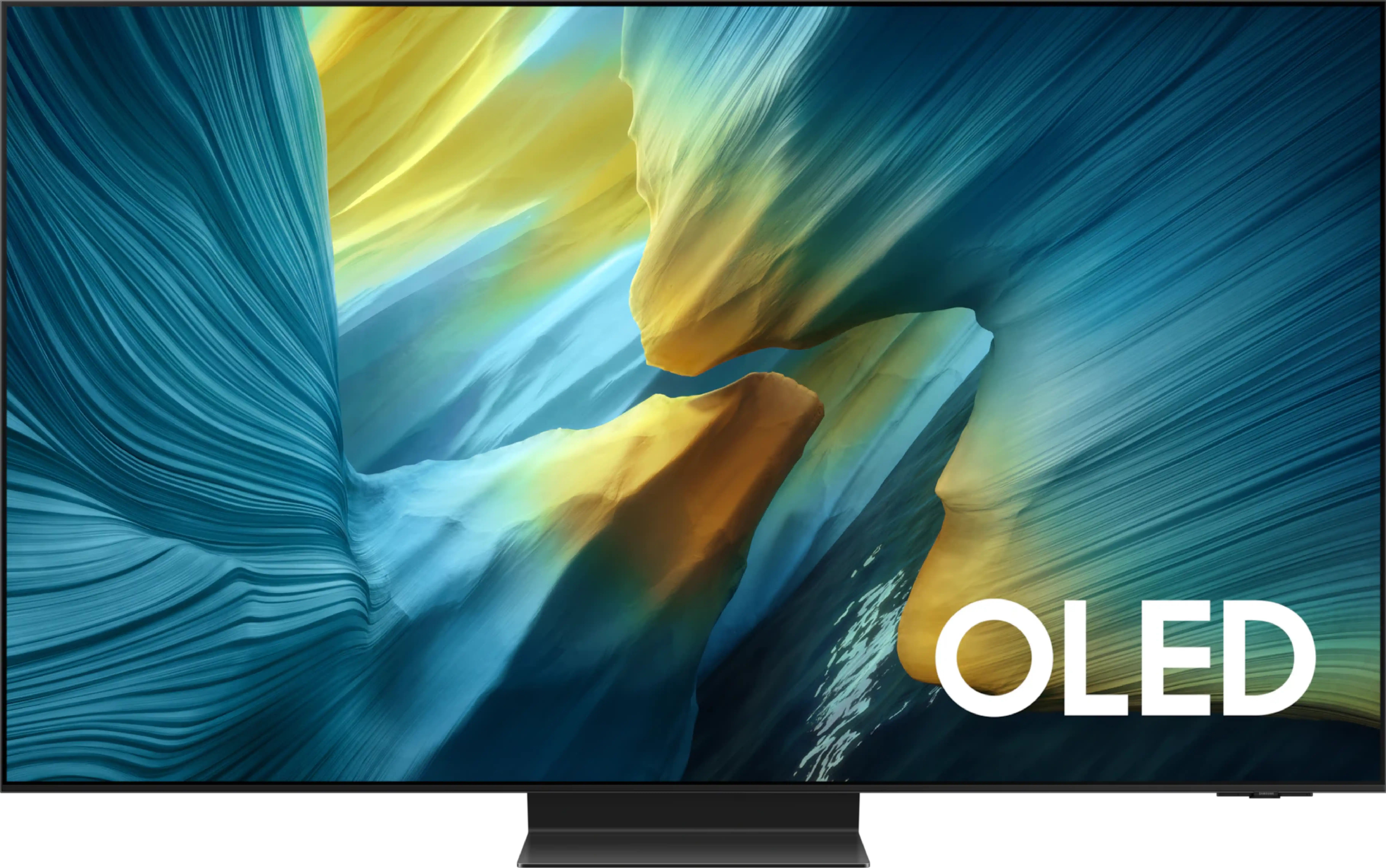
Panel type: LCD VA
Resolution: 3840x2160
System: Google TV
Model year: 2024
Complete the survey to find out the result

Panel type: QD-OLED
Resolution: 3840x2160
System: Tizen
Model year: 2025
Complete the survey to find out the result

Overall rating
6.4
8.7
Movies and series in UHD quality
6.2
9.3
Classic TV, YouTube
6.1
9.3
Sports broadcasts (TV and apps)
6.4
8.9
Gaming on console
7.8
9.9
TV as a computer monitor
4.0
8.8
Watching in bright light
4.5
7.1
Utility functions
6.0
7.9
Apps
9.6
8.7
Sound quality
7.0
8.0
Complete the survey to find out what fits your preferences
Advantages
VA matrix with decent contrast
144 Hz refresh rate and two HDMI 2.1 ports – a great option for gamers
Support for VRR and ALLM, low input lag
Dolby Vision support
Google TV with a rich selection of apps, voice search in Polish, and an intuitive interface
Decent sound
Perfect black and outstanding contrast
High brightness of the image
Amazing image quality after calibration
Ultra-fast QD-OLED 165 Hz panel
Best choice for gamers – full support for HDMI 2.1, VRR, ALLM, and HGiG, with input lag of just 5 ms (highest rating on the portal!)
Best reflection suppression thanks to the matte screen finish
Wide viewing angles without loss of quality – top level thanks to the QD-OLED panel
Intuitive and fast Tizen operating system with a rich set of features
Modern and elegant design
One Connect module for easy and aesthetic cable management
Disadvantages
HDR brightness is lower than claimed by the manufacturer (around 360 nits instead of 500)
In PC mode, it does not support 4:4:4 chroma – text and fonts are therefore less readable
No USB recording and PiP function
No support for AirPlay – Apple device owners may feel disappointed
No support for DTS:X (home theatre)
No USB recording from built-in tuners
Cherry black effect in very difficult lighting conditions
Our verdict
Samsung S95F is an excellent continuation and an improvement on last year's S95D model. Thanks to the QD-OLED panel, we receive a picture that captivates from the first minutes of viewing. The blacks are deep and natural, without any traces of backlighting, and the brightness of the new generation panel reaches levels that not long ago seemed beyond the reach of OLEDs. These values are high enough that the S95F can confidently be compared with the best Mini-LED screens – both in terms of HDR effect and in everyday use in strong daylight. After a slight adjustment of settings, the TV can offer reference image quality, creating a cohesive and cinematic experience. However, it is not just a screen for movie lovers, but also one of the absolute favourites for gamers. The 165 Hz panel with rapid response, input lag of just a few milliseconds, a full suite of gaming features – including VRR, ALLM and excellently implemented HGiG – along with four HDMI 2.1 ports make the S95F effortlessly meet the requirements of both next-gen console owners and PC gamers. It offers a range of capabilities that make the S95F one of the best gaming TVs on the market. Samsung has also taken care of practical details. The matte screen coating effectively eliminates reflections, ensuring that even in a bright living room, the picture remains clear and comfortable. The One Connect module organizes the cables, moving all connections to a separate box, which will be appreciated by anyone who likes to regularly juggle connected devices. The design of the TV is slim, elegant and well thought out – it is evident that this is a Super Premium class product that looks great in any interior. Of course, like any equipment, the S95F has its minor compromises, but at this level and completeness, it is easy to forget about them.
This is a TV that combines the best image quality with functionality and user comfort. Undoubtedly, it competes with the strongest rivals, and can confidently be regarded as one of the main contenders for the title of TV of the Year 2025.
TV appearance




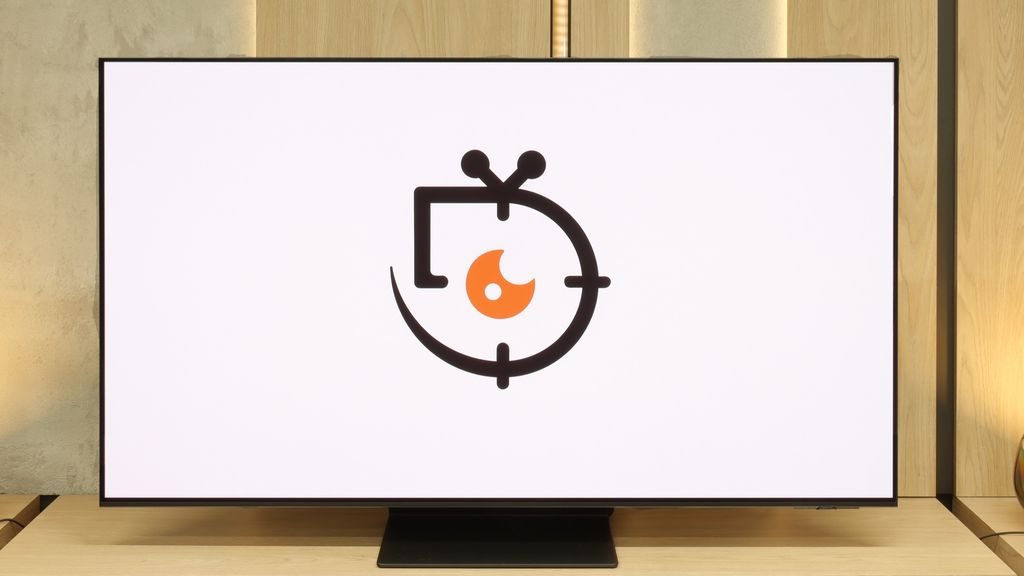
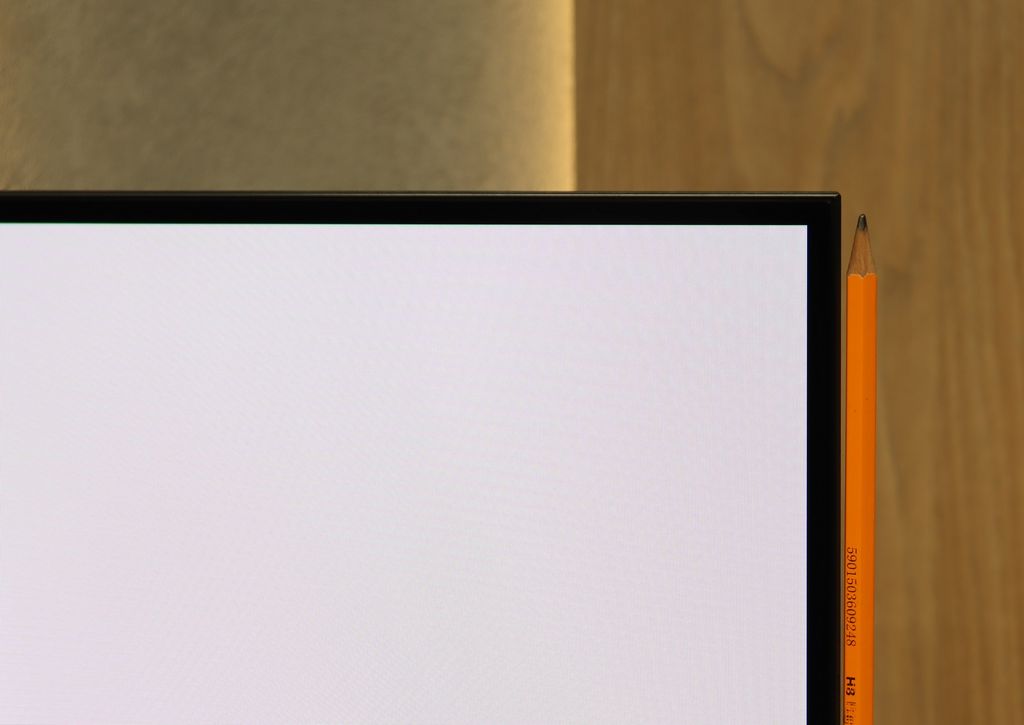
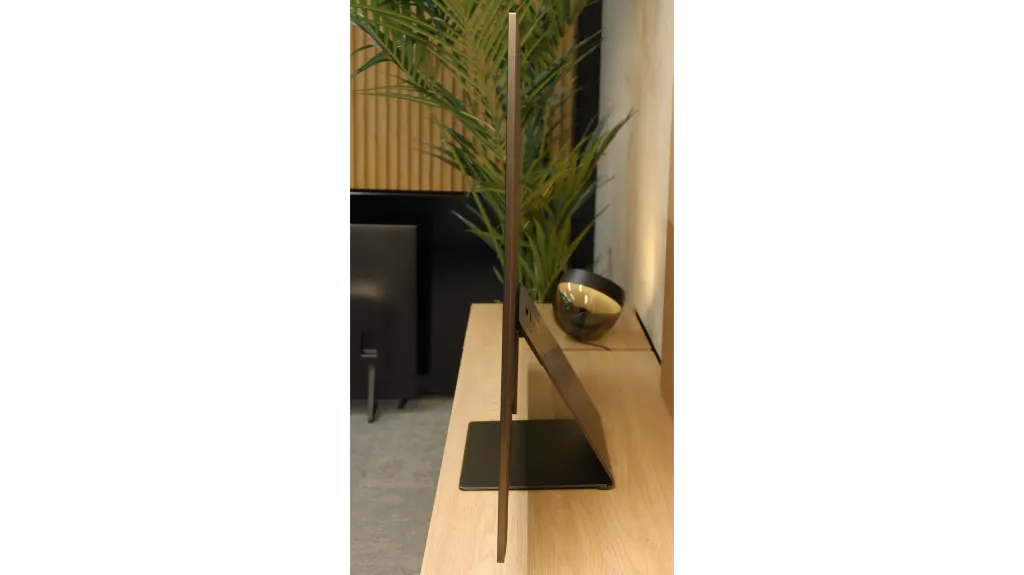

Contrast and black detail
5.9/10
10/10
Local dimming function: No
Contrast:

Result
5,300:1

Result
5,800:1

Result
6,600:1

Result
5,650:1

Result
4,700:1

Result
∞:1

Result
∞:1

Result
∞:1

Result
∞:1

Result
∞:1
Halo effect and black detail visibility:

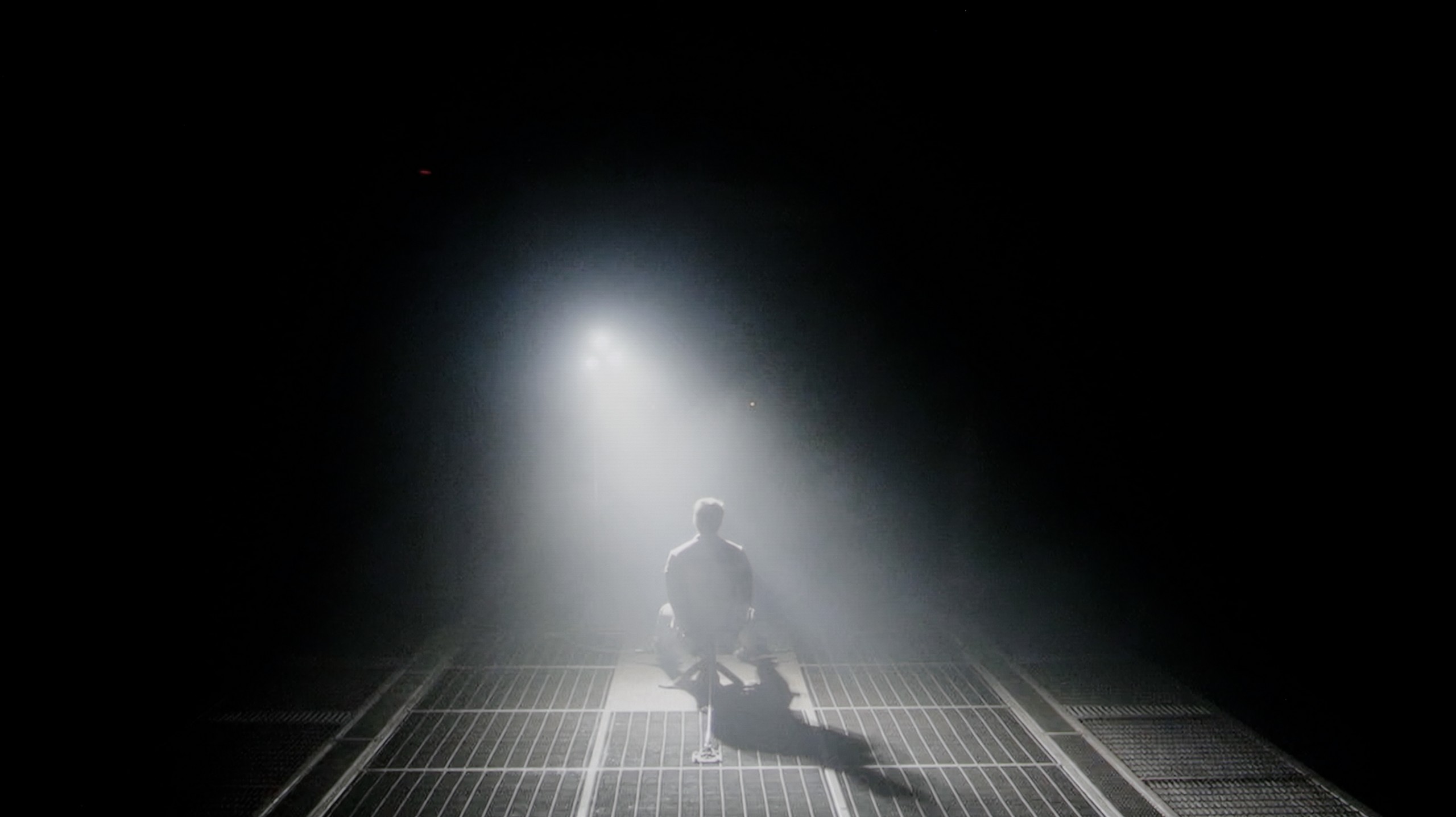
Sharp GR8 uses a VA panel, which can provide quite decent contrast. In tested movie scenes, for example in “Arrival,” the television showed that it can achieve really good results. A contrast ratio of 6600:1 is a figure that can be considered solid in this price segment. However, it should be noted that the television is not equipped with local dimming technology. This is quite obvious, considering the class of the equipment. Despite this, Sharp GR8 performs well with the separation of bright and dark elements, which definitely deserves recognition. However, it's important to remember that televisions without local dimming have their limitations. In very dark conditions, such as during a viewing in a completely dark room, black may take on shades of navy instead of appearing deep and pitch black. Overall, Sharp GR8 offers quite solid contrast that should satisfy most users.
The Samsung S95F with a QD-OLED panel shows that when it comes to blacks and contrast, it's hard to find anything better. Even the first test scenes prove that this television can achieve absolute black, while simultaneously delivering the tiniest points of light flawlessly. The effect is stunning – a star-filled sky looks as if it’s been directly transported from an observatory, and the film's darkness takes on depth and drama. Details in the shadows are preserved with reference-level accuracy, making home cinema viewing gain a new dimension.
HDR effect quality
4.8/10
8.7/10
Luminance measurements in HDR:

Result
305 nit

Result
332 nit

Result
369 nit

Result
365 nit

Result
367 nit

Result
2044 nit

Result
2159 nit

Result
2167 nit

Result
2180 nit

Result
1427 nit
Scene from the movie “Pan” (about 2800 nits)


Scene from the movie “Billy Lynn” (about 1100 nits)


Static HDR10


Dynamic: Dolby Vision
Dynamic: HDR10+


HDR luminance chart:
SAMSUNG OLED S95F (QD-OLED)
HDR luminance
Sharp GR8
HDR luminance
Sharp GR8 in its promotional materials boasts of "very high brightness" at a level of 500 nits. Unfortunately, our tests showed that reality is somewhat different – the average luminance we were able to achieve was around 360 nits. This is rather an average result, especially in the context of the manufacturer's claims. Such brightness does not allow for a full enjoyment of HDR effects. The image is a bit sharper than in standard SDR, but it's hard to talk about true vibrancy and depth of bright elements here. However, the coverage of the DCI-P3 colour palette at 95% deserves praise. This is the result of applying an additional PFS coating, known from QLED technology. As a result, colours are vibrant and have a pleasant, natural tone, which partially compensates for the shortcomings in brightness.
The new generation of QD-OLED panels in Samsung's S95F showcases its full potential, and the brightness results are simply astounding. In test film scenes, such as “Life of Pi” or “Sicario 2”, where smaller light elements appear – stars, the moon, or spotlights – the television managed to achieve over 2000 nits of brightness. This is a result that surpasses even most top Mini-LED models.
The secret lies in the technology itself – instead of a limited number of dimming zones like in Mini-LED televisions, here we have millions of glowing pixels, allowing the television to fully demonstrate its power without technological compromises. Of course, since it is still an organic panel, in scenes that are full-screen and flooded with white – like in the final sequence from The Meg – brightness drops to around 1400 nits. Nevertheless, the result remains excellent and definitely exceeds what any OLEDs, both QD-OLED and WOLED, have offered so far. The colour reproduction is also particularly noteworthy. Thanks to QD-OLED technology, the television achieves almost 100% coverage of the DCI-P3 colour space and around 80% in BT.2020. These values make HDR images not only dazzling in brightness but also stunning in their range of colours.
Factory color reproduction
5.4/10
6/10


Factory Mode
After calibration


Factory Mode
After calibration
At the beginning, it's worth noting that colour reproduction tests are always conducted in the best factory picture mode. In the case of Sharp GR8, this is the “Film” mode. When it comes to white balance, which affects how we perceive colours on the screen, in SDR mode the strong dominance of blue immediately stands out. This results in an unnatural cooling of the image – blue elements take on a purple hue, and skin tones appear to have a pink tint, which we can see in the comparative photo from the film STAR WARS. During the Color Checker test, it was clearly visible how the colour samples deviated from the standard values, confirming significant errors in colour reproduction. The gamma was also not ideal – it caused excessive brightening of the entire image, causing the scene to lose depth and proper tonal transitions.
In the 4K HDR mode, the situation looks much better. The dominance of blue is much less noticeable, although there are minor issues with the blending of red and blue. This makes some shades look slightly unnatural. The EOTF curve, which is responsible for image brightness in 4K HDR content, showed another problem – the TV tends to excessively darken the image across the entire surface of the screen.
To summarise, the “Film” mode in Sharp GR8 would require some adjustments in order to fully utilise the potential of this television. Fortunately, we took care of this and proceeded with calibration.
The best picture mode straight out of the box is undoubtedly Filmmaker Mode – a mode that Samsung has been using for several years and which is intended to faithfully convey the creators' vision. In SDR content, its implementation is not bad, although some imperfections can be noticed. The image is slightly dimmed, and the screen has a subtle pinkish hue resulting from an excess of red and blue in the white balance. Colour errors remained at a level of 3–4 ΔE units – and for the uninitiated: a value above 3 is the threshold where the average human eye starts to notice differences.
Much bigger problems arise in HDR content, however. Here, the white balance was not as much of an issue – a slight excess of blue did not significantly hinder things. The problem became brightness management. In practice, the TV "blows out" the image too much, causing details in the blacks to completely disappear. The final effect was far from what was expected, and the colour errors in this mode became quite significant. It’s hard to say why such a design decision was made, but it was clear that the factory HDR settings do not allow this TV to showcase its full potential.
Color reproduction after calibration
8/10
9.4/10




Sharp GR8 is one of those televisions that really gains a second life after proper calibration. Both in HD and 4K content, the white balance performs very well, especially considering this model's price segment. The picture becomes significantly closer to what the director intended to show – colours appear natural, and skin tones gain the right depth and warmth. The brightness characteristics also leave a very positive impression. Both the gamma and the EOTF curve demonstrate really solid values. While slight imperfections can be noticed, they are subtle enough that it's difficult to see them during everyday viewing. In summary, calibration allows Sharp GR8 to show its best face, offering a picture that is not only pleasant to the eye but also faithfully conveys the creators' intentions.
After calibration, it was possible to make subtle adjustments to the white balance and significantly improve the image characteristics. In SDR content, the quality has become practically reference-level – most colour errors have dropped below a ΔE value of 1, which is the level at which the human eye can no longer perceive differences. This is a result that places the S95F among the absolute top TV models available on the market.
In HDR material, calibration also brought a significant improvement. The tendency of the TV to blow out the image was managed, as confirmed by the analysis of the EOTF curve. There is still a slight tendency to brighten the entire scene or occasional loss of detail in the blacks, but this does not significantly affect the overall perception. After calibration, the S95F shows its full potential and can be regarded as one of the best TVs on the market!
Smoothness of tonal transitions
8/10
8.9/10












When it comes to the fluidity of tonal transitions in high-quality materials such as 4K, Sharp GR8 performs really well. Colour gradients are smooth, and transitions between shades are natural and free from visible artifacts. The television has no issues reproducing subtle differences in colours, even in demanding scenes. Only the most discerning users, who closely examine the image, may notice slight imperfections in the darkest shades. For most viewers, the quality of tonal transitions in the Sharp GR8 will be more than satisfactory and will not negatively affect the perception of the image.
The Samsung S95F with a QD-OLED panel handles tonal transitions really well. It's hard to find any serious issues here – the colour gradation is smooth, and the image looks natural. Only in very dark scenes and shades close to black can you notice some slight imperfections, but they don't matter much during everyday viewing. The overall impression is that the fluidity of transitions is at a very high level and doesn't distract the viewer's attention.
Image scaling and smoothness of tonal transitions
5.5/10
7.5/10
Smooth transition function

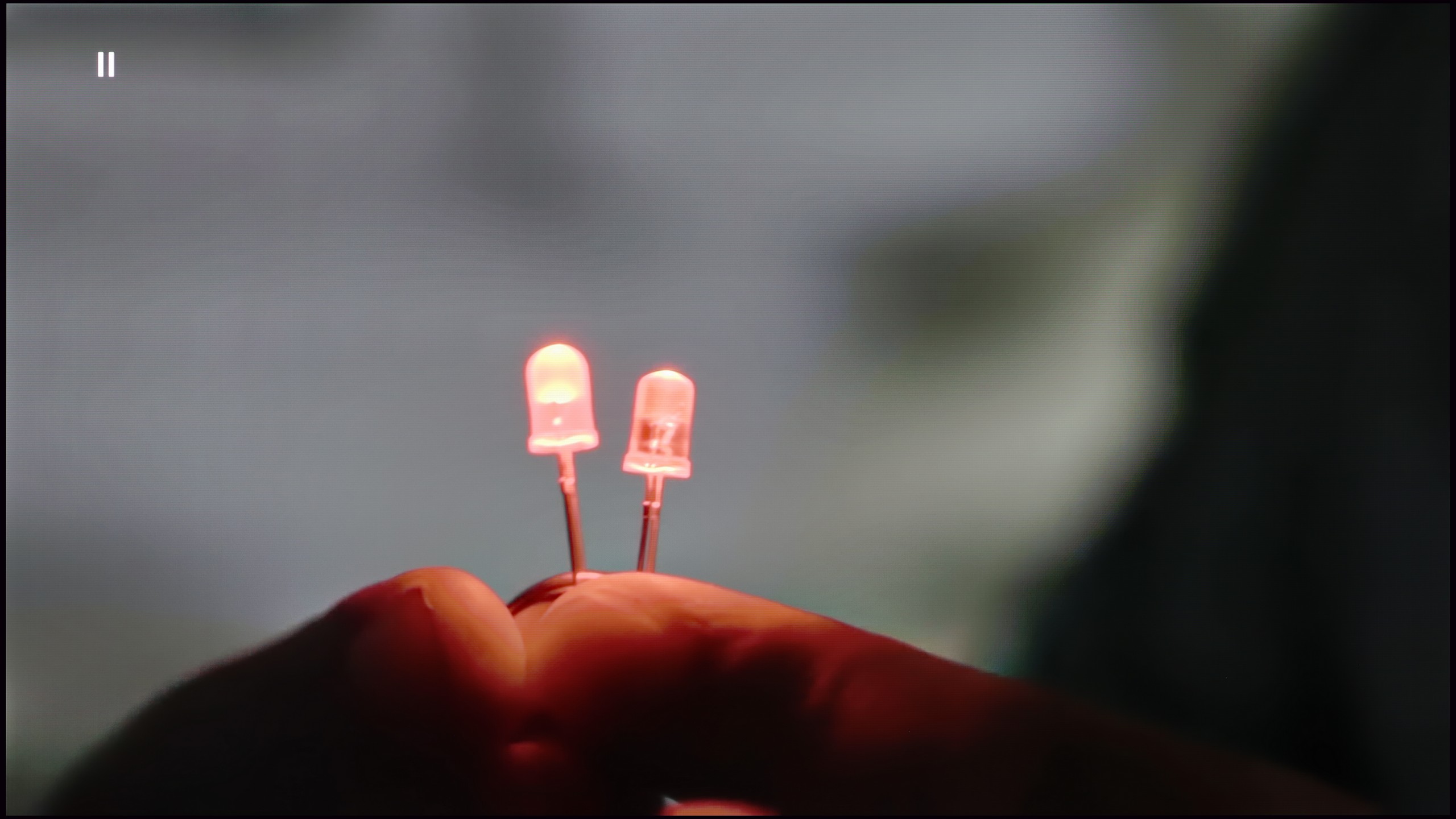
Image without overscan on the SD signal


Sharp GR8 is equipped with a feature called "10-bit colour reproduction," which theoretically should improve the smoothness of tonal transitions. In practice… well, the effect is surprising, but not in a very positive way. Even at the highest settings, it’s hard to notice any impact on the actual tonal transitions. Instead, the feature surprisingly smooths out things it shouldn’t - walls, shirts, or other flat surfaces look almost as if they have been ironed. In the test, we had to note that there is simply no actual impact on tonal transitions.
When it comes to image scaling, Sharp GR8 performs significantly better. The television can give the image a plastic, smooth characteristic, making even lower resolution content look quite good. Of course, with more demanding details, such as thin branches of trees in the background, you can see slight jaggedness, but it’s not something that would significantly affect the viewing comfort.
Samsung S95F offers a noise reduction feature that smooths tonal transitions. It works very effectively, but in practice, it can be too aggressive. Materials of lower quality – e.g. older recordings or videos from YouTube – become soft and plastic when it is enabled, resembling an image digitally smoothed in graphic software. Unfortunately, the natural film grain, which often adds authenticity to the image, disappears in the process. Fortunately, the television does not lose too much fine detail, e.g. in skin textures or environmental elements. Therefore, this feature is best used judiciously – depending on preferences, one can achieve a smooth but less natural image or one that is truer to the original. In our opinion, the most universal choice is the “Standard” setting.
Image scaling performs significantly better. The television handles lower resolution materials well – even 576p content looks quite decent, though slight blockiness can be observed. Overall, the effect is very good, although it slightly trails behind what Sony Bravia 8 (II) or LG G5 can achieve. It’s also worth mentioning a small imperfection of the S95F – in older materials, overscan may occur, causing a slight trimming of the left edge of the image.
Blur and motion smoothness
7.4/10
8.5/10


Blur (native resolution, maximum refresh rate):






Blur (BFI function enabled):
Image flickers in this mode



Smużenie ():
Smużenie (4K@165Hz):



This is where Sharp GR8 has the opportunity to stand out against the competition in its price segment. The television is equipped with a 144 Hz refresh rate panel, which is an impressive result, especially if we plan to use it for dynamic content such as action films, sports broadcasts, or video games. Additionally, the manufacturer has included a motion smoothing feature, commonly known as a 'smoother'. The user has three levels of adjustment available, allowing them to tailor the effect to their personal preferences – from subtle smoothing to a more aggressive intervention in the fluidity of the image. It's a nice addition, particularly for those who mainly watch films and care about smooth, cinematic sequences without annoying judders or stuttering.
The Samsung S95F excels in motion fluidity, presenting phenomenal performance. The panel operates at a native resolution of 4K with a refresh rate of up to 165 Hz, and when combined with QD-OLED organic technology, it delivers incredible results. Sports and games look sensational – the picture is fast, dynamic, and very natural. Additionally, the built-in motion smoother and blur reduction system allow you to customise the character of the image to your own preferences. You can opt for a more 'framey' effect with visible film texture or a smooth, cinematic spectacle. Every viewer will find a setting that suits them.
Console compatibility and gaming features
7.8/10
9.6/10
- ALLM
- VRR
- VRR range48 - 144Hz48 - 165Hz
- Dolby Vision Game Mode
- Correct implementation of HGIG
- 1080p@120Hz
- 1440p@120Hz
- 4K@120Hz
- Game bar

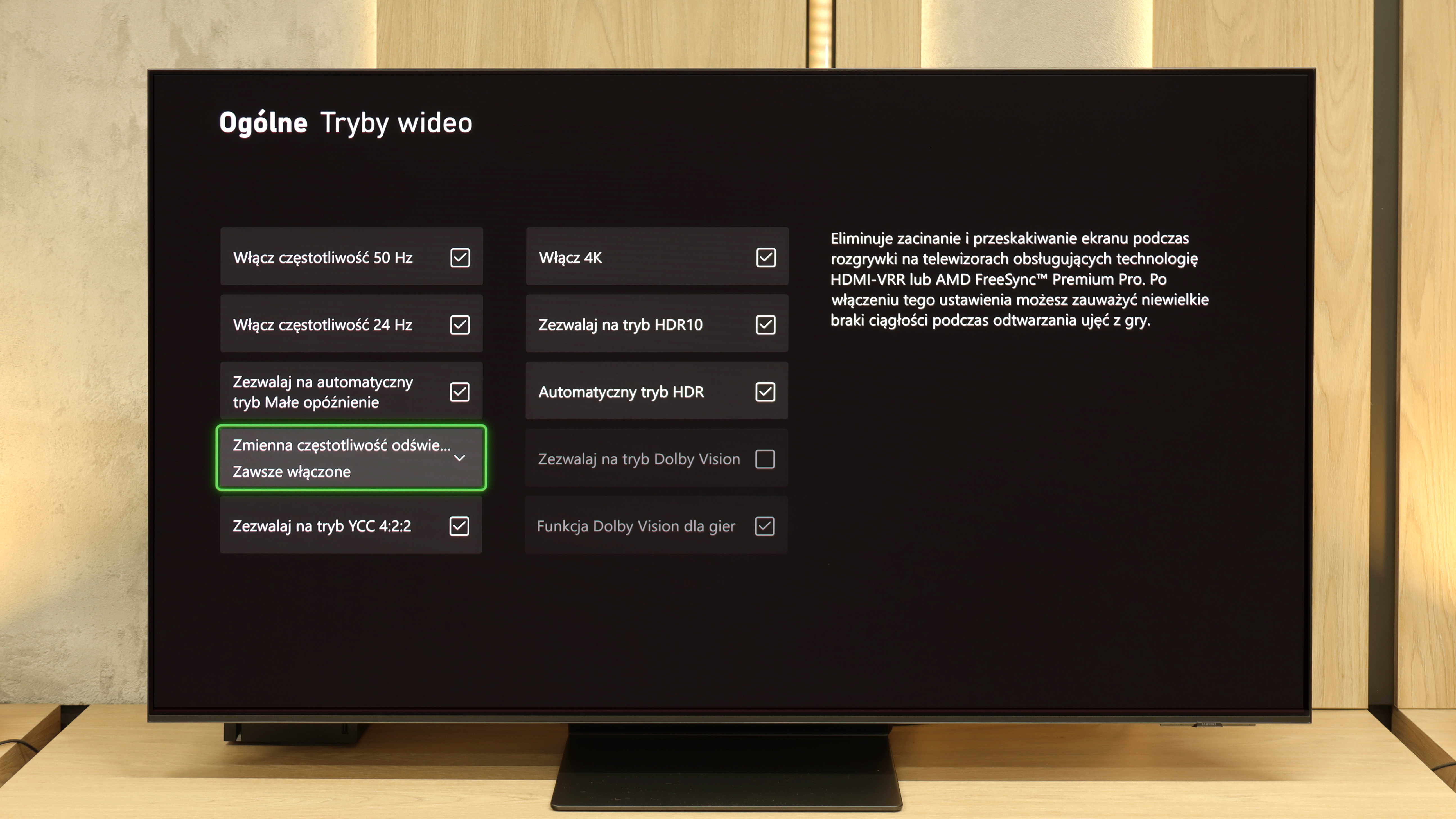

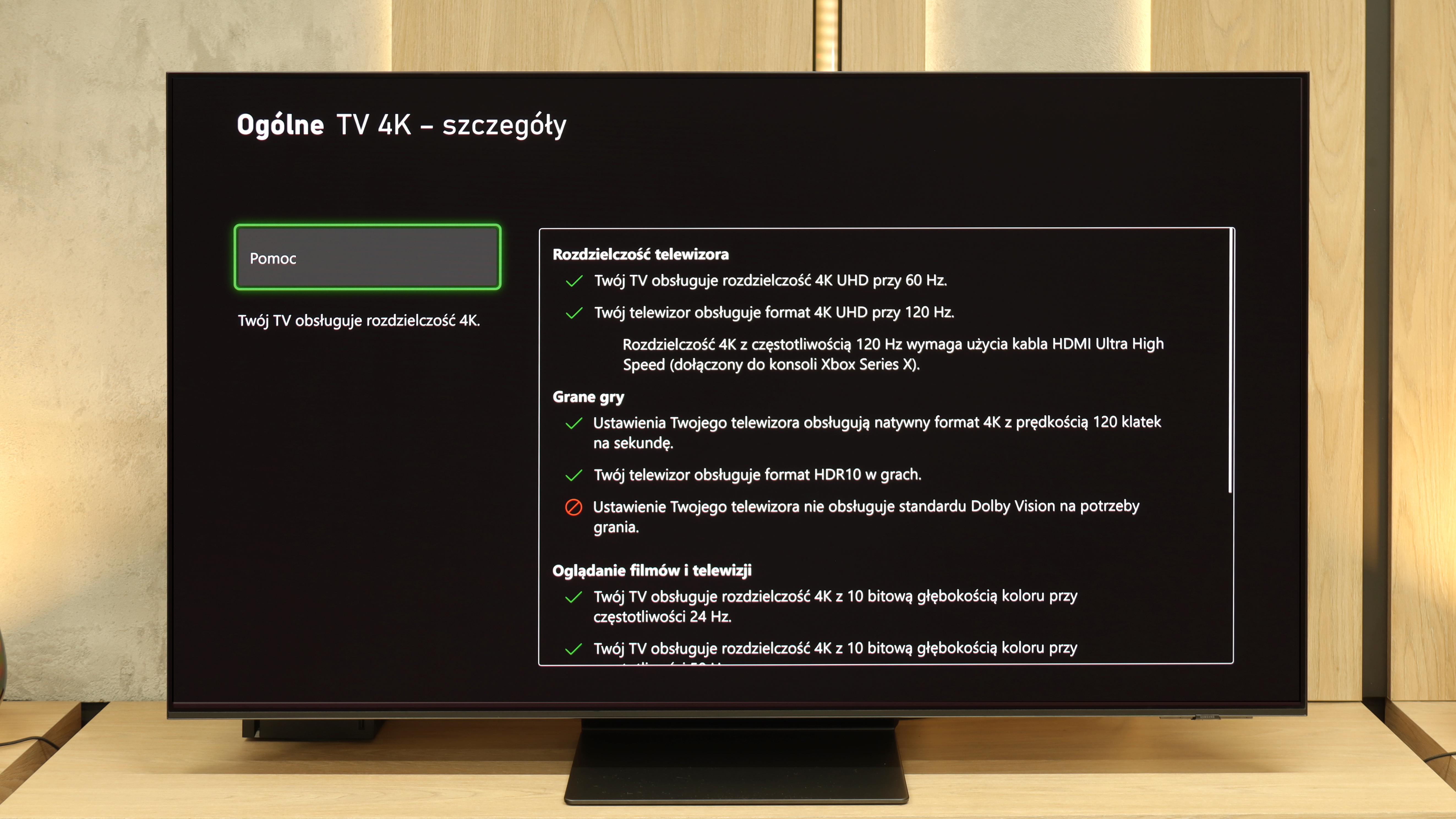

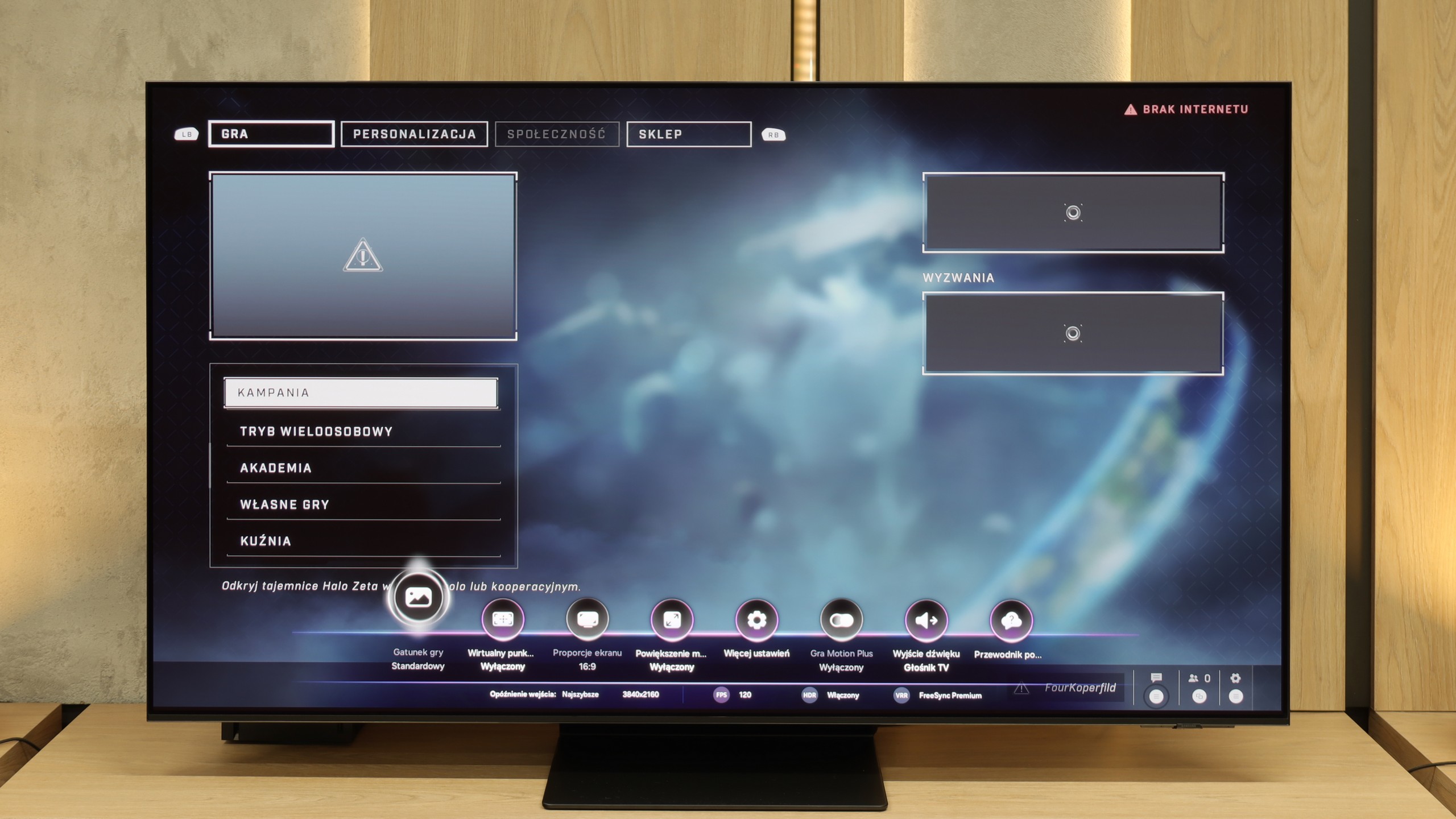

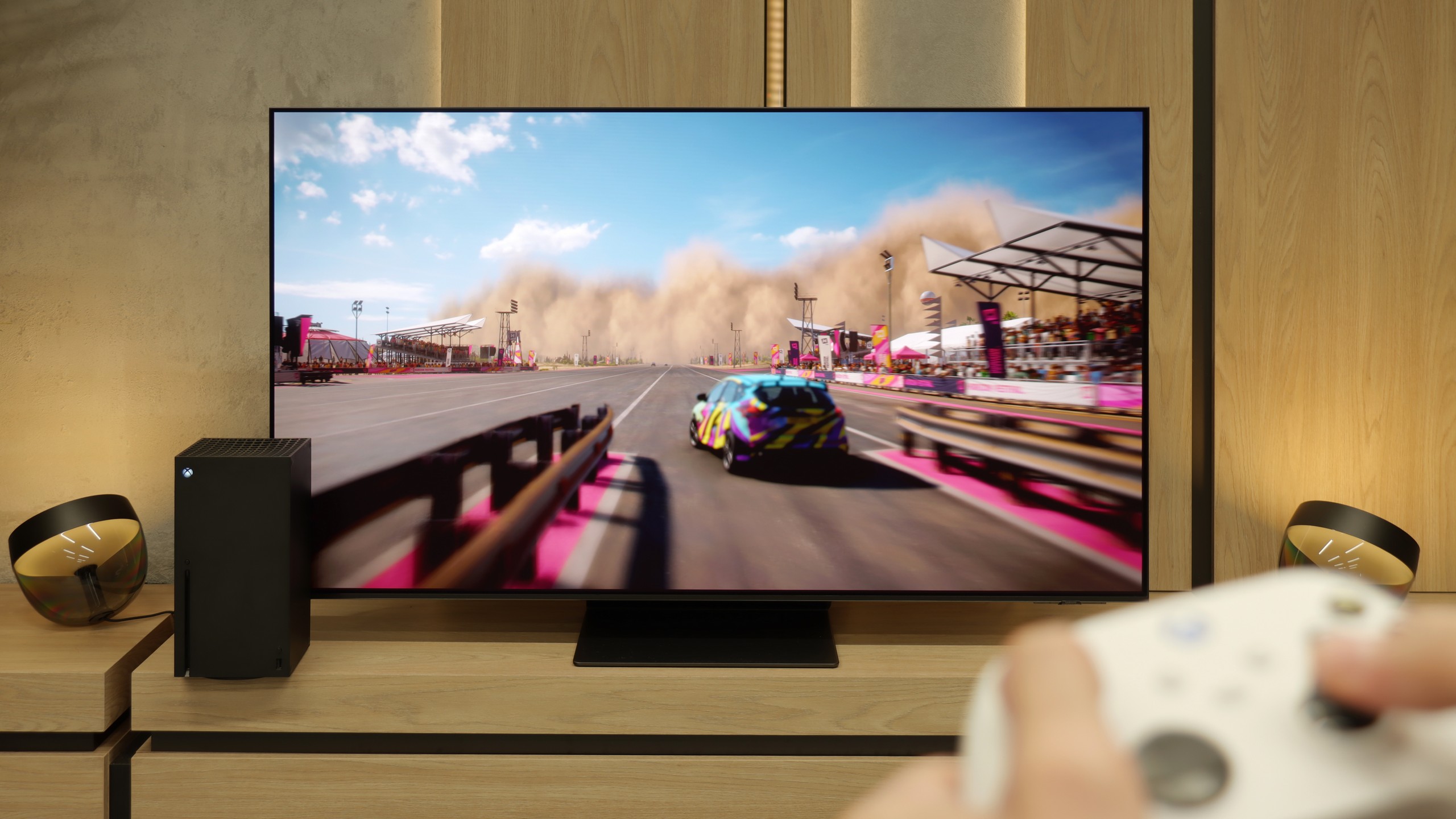
If the television has a 144 Hz panel and two full HDMI 2.1 ports, it’s clear it was designed with gamers in mind. The Sharp GR8 offers exactly that – high refresh rates and the right connections to get the most out of modern consoles and PCs. It also features ALLM, which automatically switches the TV to low latency mode, and VRR, ensuring the picture doesn’t stutter even in more demanding moments. In practice, everything works as it should, and it's difficult to find fault. However, it’s not without its shortcomings. There’s a lack of support for HGiG, which better adjusts HDR for games, as well as Game Bar, which makes it easier to quickly adjust settings without leaving the game. Despite these drawbacks, the Sharp GR8 is a really solid option for gamers.
The same advantages of low motion blur and excellent motion fluidity characteristic of OLED panels are just the beginning, as the Samsung S95F has been designed with gamers in mind. The manufacturer has equipped it with four HDMI 2.1 ports – though limited to a bandwidth of 40 Gb/s, in practice, this has no impact on compatibility with consoles or PCs. We get a full package of gaming features: variable refresh rate (VRR), automatic game mode (ALLM), as well as a very well-implemented HGiG standard, ensuring that HDR titles look as the creators intended. This is complemented by Game Bar – a clear settings hub, where with one motion, we can preview and change all key image parameters. The proprietary motion smoother Game Motion Plus also deserves praise, as it can smooth out animation, which is especially useful in productions running at 60 frames, where stability is not always exemplary. While there is no support for Dolby Vision in games, it’s hard to consider this a serious drawback – Samsung compensates with other solutions. This is one of the best, if not the best, gaming TVs available on the market today.
Input lag
9.7/10
10/10
SDR
HDR
Dolby Vision
Sharp GR8 performs really well in terms of delays. With a refresh rate of 120 Hz, the input lag is only 9 ms, and at 60 Hz – about 18 ms. These values are practically imperceptible even for the most demanding gamers, where every millisecond counts. Importantly, the Dolby Vision mode also works responsively, which is not a standard in TVs within this price range. This is definitely a big plus for those who want to enjoy not only smoothness but also better HDR effects while gaming.
The input lag on the S95F is at a level where it’s hard to even talk about lag. 5 ms at 120 Hz content means there’s no space for hesitation between pressing a button and the response on the screen. It’s pure immediacy. And if someone’s worried about the 60 Hz mode – don’t stress, there we’re talking about 10 ms, which is still a figure that places the TV in the absolute top tier and gives no reason for complaints.
Compatibility with PC
4/10
8.8/10

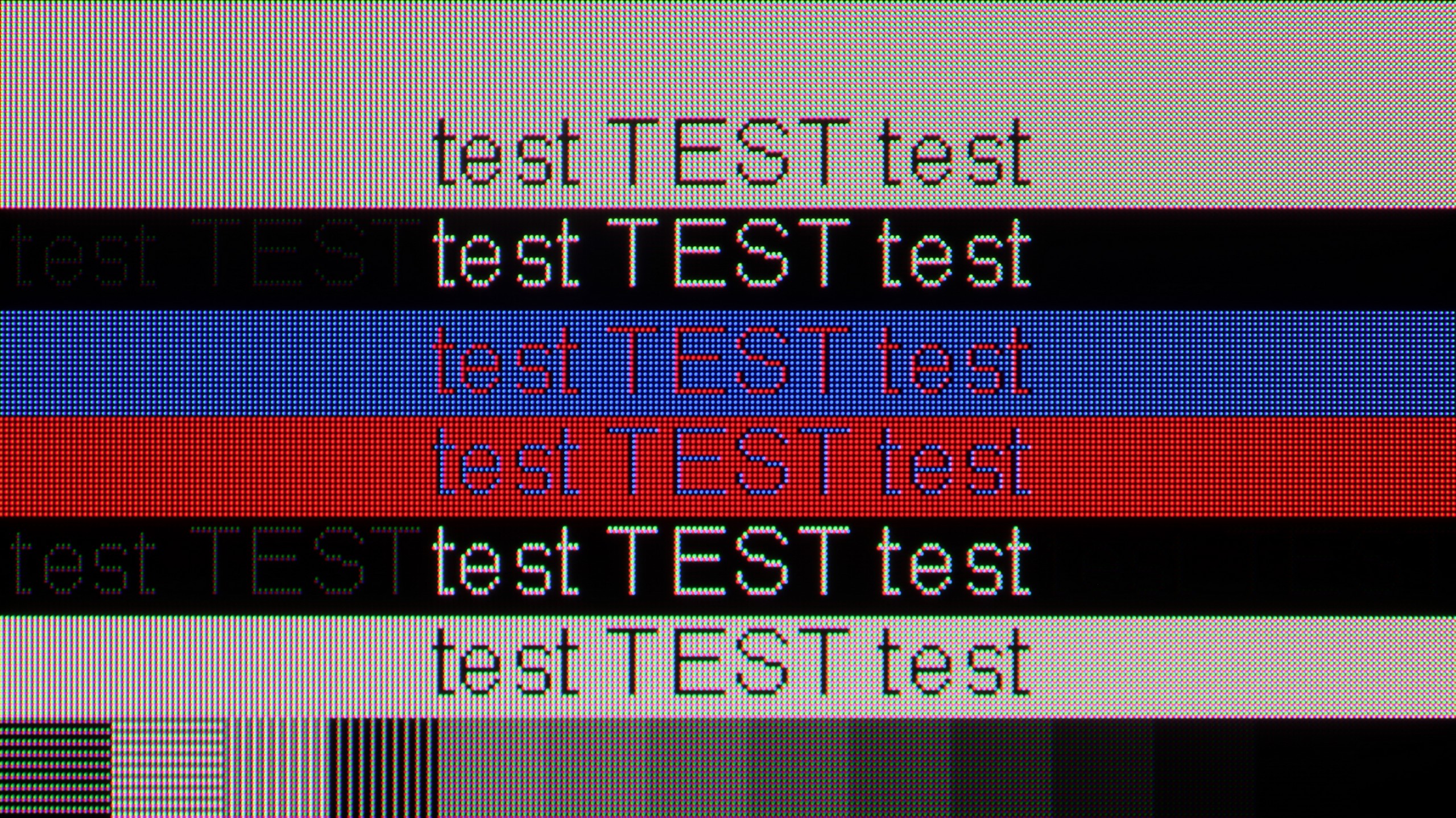
Sharp GR8 performs quite well as a screen for PC gaming. With a refresh rate of 144 Hz, low input lag, and support for G-Sync and FreeSync technologies, it's a set that guarantees smooth and responsive gameplay. Games look dynamic, and the image remains stable even in the most demanding moments. However, a problem arises when it's time to work with text. The television does not support chroma 4:4:4, which means fonts are blurred and difficult to read. Longer work with documents or browsing websites can become simply tiring on the eyes.
Sharp GR8 is a great choice for PC gamers, but rather poor for office work. If we plan to use this television mainly for gaming, we should be satisfied. However, if we think of it as a monitor for everyday work, it's better to look for another solution.
S95F with a QD-OLED panel is a true magnet for PC gamers. The 165 Hz refresh rate combined with virtually negligible input lag and full support for G-Sync and FreeSync means the TV functions like a top-tier monitor. Dynamic action games, shooters, and racing games gain fluidity and responsiveness that are hard to find in competing models. When working with text, you may notice a subtle rainbow halo around letters, characteristic of the sub-pixel layout of QD-OLED, but thanks to proper handling of chroma 4:4:4, everything remains readable and does not interfere with everyday use.
Viewing angles
3.2/10
9.8/10
When it comes to viewing angles, Sharp GR8 doesn't surprise – and it's hard to blame it, considering the use of a VA panel. When watching from a more significant angle, the image loses quality, colours become washed out, and contrast noticeably drops. Additional coatings that widen viewing angles could improve this aspect, but that's a solution we typically find in more expensive LCD TV models. If we plan to watch television mainly straight on, there won't be much of a problem. However, in the case of a larger number of viewers sitting at different angles, it's worth being aware of this limitation.
Samsung S95F with a QD-OLED panel currently offers some of the best viewing angles on the market. Whether we're sitting directly in front or off to the side of the couch, the picture remains consistent – colours don't lose their intensity, and contrast doesn't degrade. It's a screen that's hard to find a weak point in this category.
Daytime performance
4.5/10
7.1/10

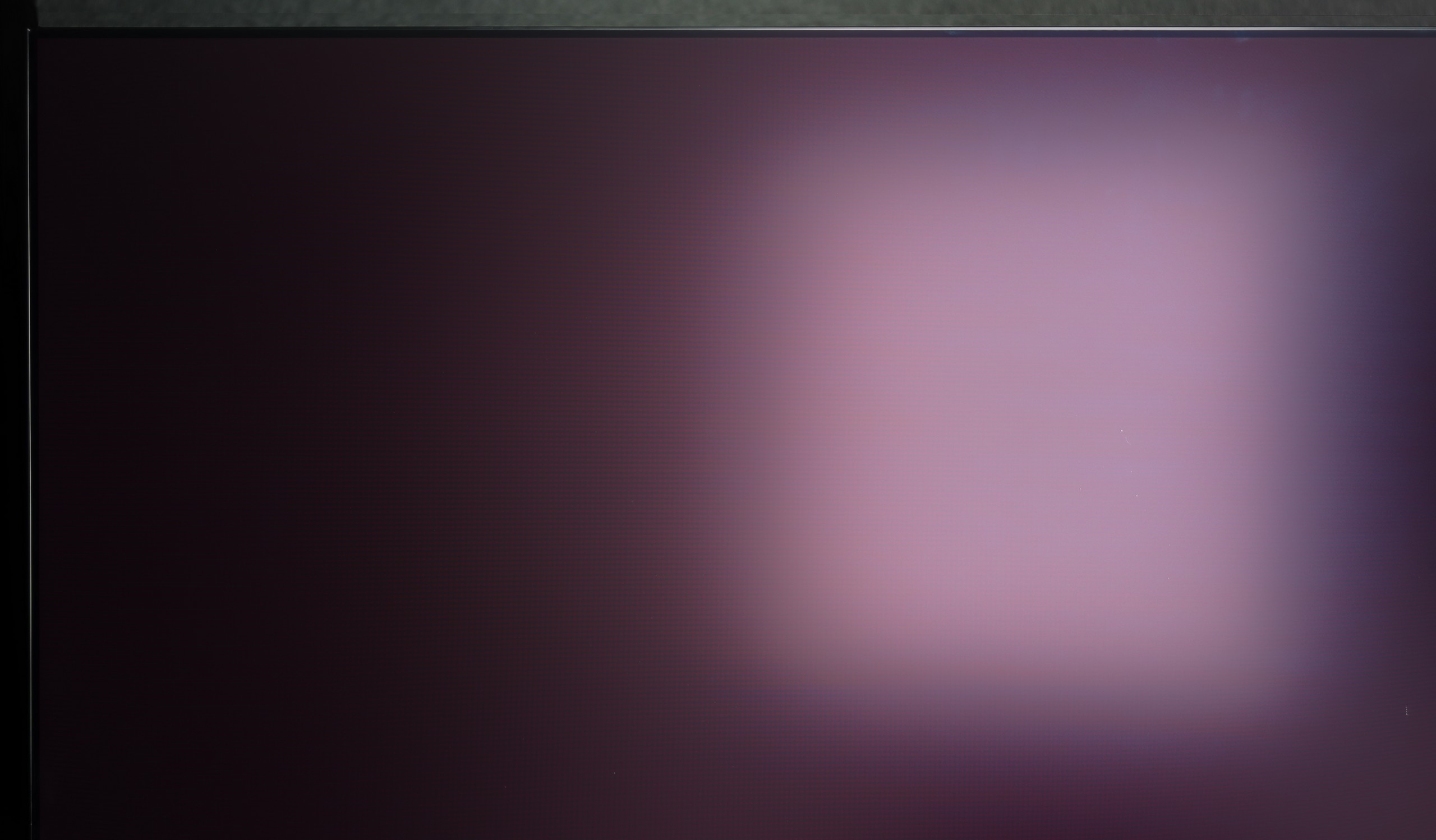


Panel brightness
Average luminance SDR
SAMSUNG OLED S95F (QD-OLED): 671 cd/m2
Sharp GR8: 329 cd/m2
Sharp GR8 has a satin finish display that performs average with reflections. Bright surrounding elements, such as windows or lamps, quite clearly reflect on the screen and can be distracting while viewing. The brightness level of 330 cd/m² in SDR content is also unimpressive. As a result, the television is best suited for rooms where not too much natural light comes in. So, it can be said that the GR8 holds up during the day, but it is certainly not equipment made for brightly lit living rooms. If we mainly watch in the evenings or in controlled lighting, it won’t be a major issue.
One of the biggest distinguishing features of the Samsung S95F compared to its competitors is the matte screen coating. This solution performs best on the market in terms of reducing reflections and glare – the image remains clear even in a brightly lit living room. However, it’s important to keep in mind that the characteristics of the QD-OLED panel come with a certain compromise. Under intense lighting, black can brighten, taking on a cherry black hue, which affects color saturation. On the other hand, the brightness of the panel, reaching around 700 nits in SDR mode, is fully sufficient for the TV to perform flawlessly in typical daylight conditions.
Panel details
Subpixel Structure:

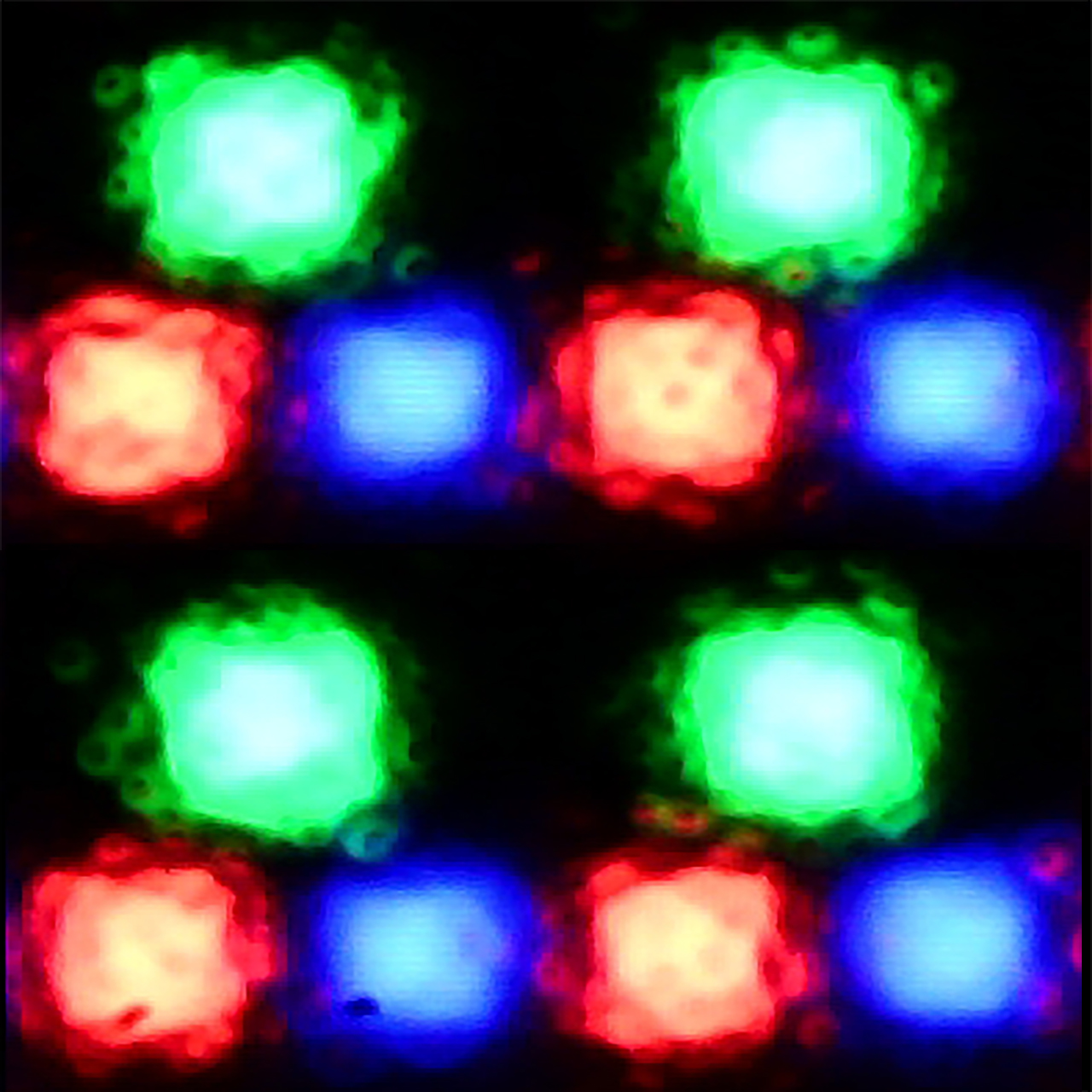
Panel uniformity and thermal imaging:


Sharp GR8
SAMSUNG OLED S95F (QD-OLED)
TV features
6/10
7.9/10
- HDMI inputs2 x HDMI 2.0, 2 x HDMI 2.1 48Gbps0 x HDMI 2.0, 4 x HDMI 2.1 40Gbps
- Other inputsRCA (Chinch)
- OutputsToslink (Optical audio), eARC (HDMI), ARC (HDMI), Mini-Jack (Headphones)Toslink (Optical audio), eARC (HDMI), ARC (HDMI)
- Network InterfacesWi-Fi 2.4GHz, Wi-Fi 5GHz, Ethernet (LAN) 100MbpsWi-Fi 2.4GHz, Wi-Fi 5GHz, Ethernet (LAN) 100Mbps
- TV receptionDVB-T, DVB-T2, DVB-S, DVB-S2, DVB-CDVB-T, DVB-T2, DVB-S, DVB-S2, DVB-C
Classic features:
- Recording to USB (terrestrial TV)
- Recording programming
- Picture in Picture (PiP)
- RF remote control (no need to aim at the screen)
- Backlit remote control
- Teletext
- Audio only mode
- Bluetooth headphones support
- Simultaneous Bluetooth headphones & TV audio
Smart features:
- AirPlay
- Screen mirroring (Windows Miracast)
- Voice search
- Voice search in native language
- Ability to connect a keyboard and mouse



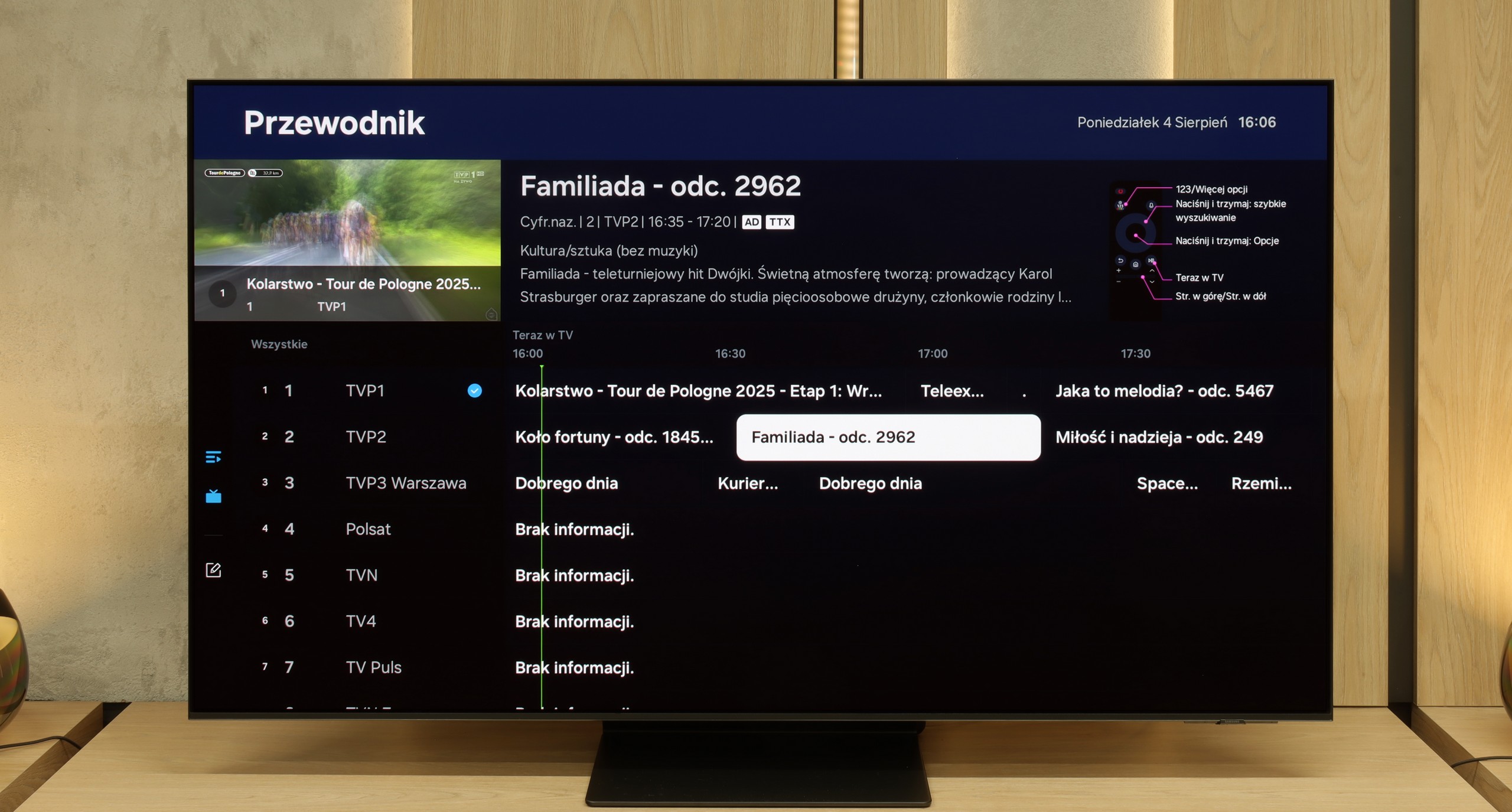

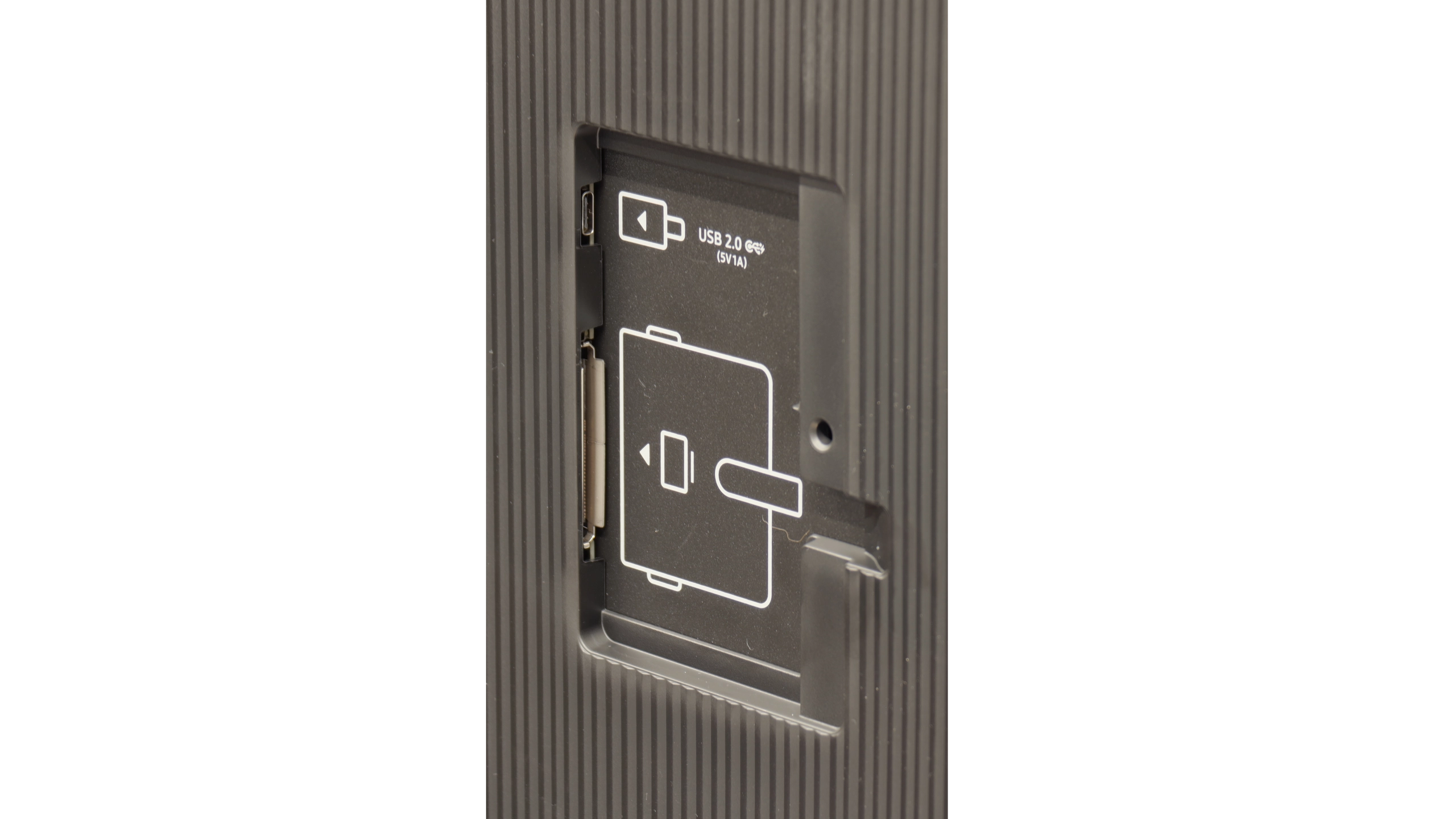
Google TV is definitely the biggest advantage of Sharpa GR8. This system is a true multimedia powerhouse – it includes practically all popular streaming apps, such as Netflix, HBO Max, and Disney+. Voice search works in Polish and, importantly, is really responsive. We can tell the TV what we want to watch, and it quickly finds the right content. Plus, the interface is clear and intuitive, so even people who aren't keen on technological innovations can manage without any problem. In short, Google TV gets the job done.
Unfortunately, when it comes to more classic functions, the GR8 is rather average. There are no options for USB recording or PiP (picture in picture) functionality. Moreover, although the TV supports Bluetooth connectivity, iPhone users may feel disappointed as there is no support for AirPlay.
The remote included is simple but well thought out. It has a solar panel on the front, allowing it to be charged by light, and the additional charging port means we don’t have to worry about changing batteries. Also, it’s a plus that the remote doesn’t require aiming at the screen – it works regardless of which way it’s pointed.
SmartTV in S95F: Tizen
Compared to the competition, the Samsung S95F not only shines with its picture quality but also shows that smart features can be really well thought out. Tizen runs very quickly, doesn’t hang up, and gives the impression that everything is at your fingertips – from AirPlay to simple voice search, which works even when the remote goes missing. Admittedly, the system isn't open like Android, but to be honest, very few will notice any shortcomings here – there are plenty of apps, and additional features like integration with SmartThings only enhance the feeling of completeness.
Classic features of S95F
Interestingly, Samsung reminds us that a television is still a television. Therefore, alongside the modern gadgets, we also find the classics – PiP, teletext, and the option to pair headphones via Bluetooth. There’s no recording to USB from DVB-T/T2 tuners, but instead, we get a remote that can also manage the Canal+ decoder and other devices in the living room. And the cherry on top is the One Connect module – all connections in a separate box, making connecting devices no longer an extreme sport.
Playing files from USB
9.1/10
9/10
Supported photo formats:
Maximum photo resolution:


Sharp GR8 handles multimedia playback from USB really well. It supports practically all popular audio and video formats, so we don’t have to worry about any files not playing.
However, the built-in player has its limitations – for instance, we won’t find the option to change the font colour in subtitles here. Fortunately, the Google TV system allows us to bypass this issue. All you need to do is download an alternative media playback app from the Google Play Store that offers more advanced configuration options.
The built-in player in the S95F does the job – movies and music start without a hitch, so it's more than enough for everyday use. The trouble starts when we expect complete compatibility with what the manufacturer claims. Not all photo formats work, and HEIC files simply refuse to cooperate. However, for most people, this won't be an issue – for basic applications, such a player performs flawlessly.
Apps
9.6/10
8.7/10














































Sound
7/10
8/10
- Maximum volume-82dB
- Dolby Digital Plus 7.1
- Dolby True HD 7.1
- Dolby Atmos in Dolby Digital Plus (JOC)
- Dolby Atmos in Dolby True HD
- DTS:X in DTS-HD MA
- DTS-HD Master Audio
Sharp GR8 pleasantly surprises with its sound quality. Although it comes with a standard set of speakers, you can hear the influence of collaboration with Harman/Kardon. The sound is clear, dialogue is well-highlighted, and the overall sound profile is pleasant to the ear. It's not at the level of flagship models with advanced audio systems, but for this price segment – it's really good.
Unfortunately, Sharp has chosen to remove the built-in soundbar that we saw in the previously reviewed model Sharp FQ8. It's a shame because this solution significantly enhanced the sound quality and gave the TV an edge over the competition.
The built-in speakers of the S95F can be surprisingly good – they sound pleasant and clear, and despite the slim design of the TV, it's hard to say the audio is flat. Sure, there could be more bass, but that’s a natural compromise with such a thin casing. For everyday watching of movies or series, the set works excellently. Those who enjoy stronger experiences should consider a soundbar – preferably one with Q-Symphony support. Then the TV speakers and the Samsung soundbar work together.
Acoustic Measurements
No acoustic data
82dBC (Max)
75dBC
